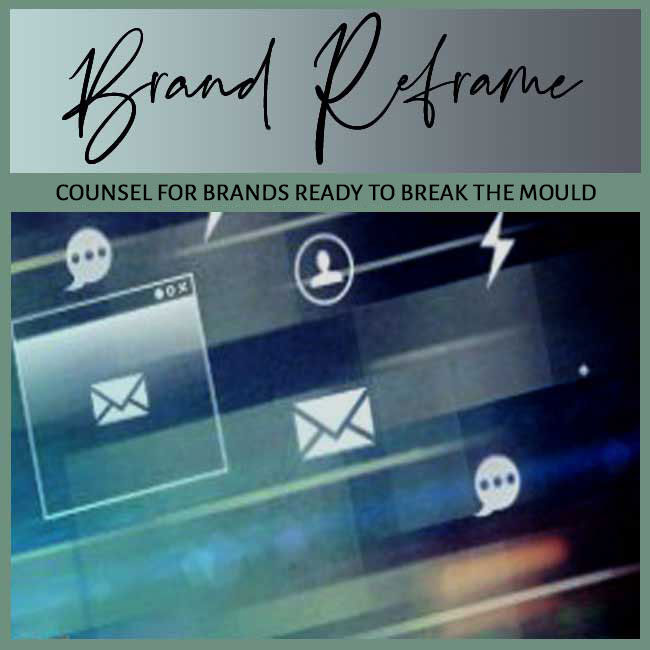
FOCUS: BRAND FOUNDER MISFIT | AUDIENCE: INVESTORS IN SLUGGISH BRANDS
BY: SHOBHA PONNAPPA | BRAND BREAKTHROUGH STRATEGIST | 45 YEARS | 125+ CLIENTS
I answer 6 tough questions about how a founder’s personal skillset can unintentionally make a brand hard to scale … and what to do.
I often see brands where the founder’s strongest skills define the business model, delivery style, and even the customer experience. This works brilliantly in the early stages, when the founder’s touch is part of the appeal. But over time, those unique personal strengths can become rigid structures the brand struggles to move beyond. When scaling demands broader capabilities, the founder’s skillset can quietly turn into the brand’s constraint.
In many cases, the brand’s operations are designed entirely around what the founder does best. Processes, offers, and messaging often reflect their personal preferences rather than market demands. This alignment feels efficient at first but creates hidden dependency traps as the brand tries to expand. The more embedded the founder’s skills are in the core offer, the harder it becomes to hand over responsibilities or diversify capabilities.
Over time, the market may shift in directions the founder’s skillset cannot easily serve. The brand may resist adapting because doing so feels like abandoning its “signature” quality. This resistance makes scaling both resource-heavy and emotionally difficult. The brand ends up growing in small increments instead of making bold leaps forward.
Investors often focus on market fit and financial performance, but founder-dependency is a critical growth red flag. A brand built on one person’s unique skillset is inherently fragile, especially if that skill is not easily transferable or scalable. This fragility can become a valuation risk when planning exits or rapid expansion. Detecting it early gives investors time to plan strategic interventions.
Without addressing this issue, capital injections may yield diminishing returns. Marketing spend might drive initial sales but fail to sustain momentum if the founder cannot meet the operational demand. In high-growth phases, reliance on one skill can slow decision-making and weaken agility. Overlooking this factor can quietly erode both brand value and investor confidence.
One sign is when every critical decision funnels back to the founder for approval. Another is when the founder’s direct involvement is necessary for delivering the promised brand experience. These patterns reveal structural over-reliance on one person’s time and expertise. If removing the founder from day-to-day operations causes service breakdown, scalability is already compromised.
Another red flag is when product development stalls unless it aligns with the founder’s expertise. The brand may avoid exploring lucrative new segments because they lie outside the founder’s comfort zone. This limits innovation and keeps growth locked within familiar boundaries. The resulting stagnation can be slow-moving but deeply damaging over time.
Founders can start by defining their skillset as one pillar of the brand, rather than its sole foundation. This means designing offers, systems, and marketing in ways that can be replicated without their direct input. The key is creating transferable brand value that goes beyond the founder’s personal abilities. This mindset shift allows the brand to expand into areas that the founder may not personally lead.
Another step is building complementary leadership around the founder. Bringing in experts who fill capability gaps ensures the brand’s growth is not bottlenecked by one person’s limitations. It also gives the founder freedom to focus on strategic vision instead of daily delivery. Over time, the brand’s identity becomes less about one skill and more about a cohesive, scalable value proposition.
Documenting processes is one of the most effective first steps. This transforms tacit knowledge … skills that live only in the founder’s head … into a structured system others can follow. Once processes are codified, they can be taught, measured, and improved without constant founder involvement. This transition strengthens the brand’s resilience and adaptability.
Another strategy is to diversify revenue streams that do not depend on the founder’s direct work. For example, productising services or introducing partner-led delivery can ease operational strain. These changes allow the brand to meet increased demand without compromising quality. Over time, scaling becomes a planned progression rather than a stressful leap.
Investors can encourage founders to see beyond the comfort zone of their own skillset. This often involves funding leadership hires, training programmes, or systems development that reduce dependency. The goal is to help the brand build capability depth, not just financial resources. This support can significantly speed up the transition to a scalable structure.
Mentorship and network access are equally valuable. Connecting founders with peers who have successfully scaled can normalise the idea of stepping back from hands-on delivery. Investors who actively guide this process protect their investment while empowering the founder. Over time, this partnership ensures the brand’s growth is sustainable, not just explosive.
If these questions sound uncomfortably familiar, your brand may not be broken … but it is anchored in one person’s capacity. That anchor can become a brake on growth if left unaddressed. The good news? With the right strategic delegation and system-building, a founder’s strengths can evolve into a scalable advantage.
If you’re brand owner or manager seeking stronger brand performance, this FAQ Insight Post I wrote could interest you: “FAQs: When Your Campaign Generates Buzz but Brings No Buyers.“
And if you’re a solo expert looking to sharpen traction, this FAQ Insight Post I worked on may resonate: “FAQs: When Your Brand’s Core Idea Changes with Every Audience.“

"One BIG IDEA can turn brand stagnation into unstoppable movement. Spots are limited each week ... book your breakthrough session now."
Shobha Ponnappa
More Breakthrough Ideas … Case Studies & FAQs … from the Brand Founder Misfit Category
Case Studies
FAQ Insights
Smart insights, real-world frameworks, and idea-driven clarity – designed to help brands move.
Get my fortnightly Brand Reframe newsletter. Smart insights, distilled thinking, and focused momentum to help your brand lead.

Get my free AI strategy guide. Smart prompts, sharper briefs, and practical ways to make AI support your brand momentum.

Just fill in the form to join. Get my newsletter and the guide shown alongside, all with several game-changing tips.